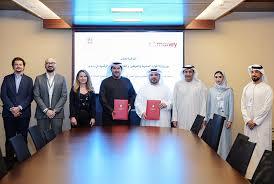• ‘New Silk Road’ extends across Asia, Middle East and North Africa, home to a population of 4.9 billion people and representing more than 40% of global economy.
• The region is home to eight of the world's top 20 economies and is projected to account for 48% of global GDP by 2040.
• Connectivity is increasing, with 60% of regional trade activity occurring between Silk Road economies.
• Opportunities emerging in six key areas: Energy Transition, Mobility & Transport, Financial Services, Supply Chain, Emerging Payments and Digital Disruption.
• Region has seen two of the world’s largest regional trade agreements: the Regional Comprehensive Economic Partnership (RCEP) and the Comprehensive and Progressive Agreement for Trans-Pacific Partnership (CPTPP).
By : Amir Taha
A major new report from Oliver Wyman, a global management consulting firm and a business of Marsh McLennan (NYSE: MMC), has identified a range of priority economic opportunities in the ‘New Silk Road’ region that stretches across Asia, Middle East and North Africa.
The New Silk Road – Growth, Connection, Opportunity identities six key areas that have emerged in the increasingly interwoven economies of Asia and the MENA region. The authors argue that a new phase has begun in the relationship, driven by intraregional flows of capital, talent, and technology, and sharpened as business activity expands beyond trade and construction into a range of new sectors, including automotive, clean technology, and artificial intelligence.
One of the dynamic factors reshaping the economies of the region is the increasingly assertive role of GCC countries, which are leveraging high energy prices to diversify their economies and secure their post-oil futures through investment into financial services, logistics, tourism, technology, and manufacturing. The report cites the long-term strategic plans of the Kingdom of Saudi Arabia and the United Arab Emirates as particularly important in this regard.
The six themes covered in the report are Energy Transition, Mobility & Transport, Financial Services, Supply Chain, Emerging Payments, and Digital Disruption, with a focus on outlining specific action steps for private sector and government organizations to enable them to prosper in this evolving environment.
In support of these themes, the report investigates opportunities in China’s clean tech exports, energy transition financing platforms, supply chain relocations, a digital gaming boom, enhanced payment solutions, wealth management and private markets, among others.
Adel Alfalasi, Head of the UAE at Oliver Wyman, Partner in the Government and Public Institutions Practice and a co-author of the report, explains: “The countries that are part of the New Silk Road region are powering ahead with economic opportunity being driven by three major triggers: energy transition, global supply chain disruption, and geopolitical tensions and regionalization. Each of these core shifts are reshaping and generating opportunities in a region that accounts for over 40% of the global economy.”
The report’s definition of the New Silk Road extends across Asia, the Middle East, and North Africa, with a particular focus on the 20 largest economies that account for 95% of the region’s GDP. It highlights several key macroeconomic factors that are driving economic development and innovation.
Critically, the authors estimate that the New Silk Road, which is currently home to eight out of the world’s top 20 economies, will see its share of global gross domestic product (GDP) rise to 48% by 2040.
In addition, the New Silk Road is fundamental to global supply chains, holding 86% global export share for semiconductors, 65% for clothing, and 40% for oil, in addition to featuring some of the world’s largest export manufacturers, including China and Japan, and emerging contenders such as India and Indonesia. Connectivity is also increasing, with nearly 60% of total trade activity in the region currently taking place with other modern Silk Road economies.
On a regulatory level, two of the world’s three largest regional free-trade agreements are focused on the New Silk Road region – the Comprehensive Economic Partnership (RCEP) and the Comprehensive and Progressive Agreement for Trans-Pacific Partnership (CPTPP). At the same time, the number of bilateral agreements between Asia and the Middle East is rising.
In all, the report’s authors are confident that, providing critical geopolitical and environmental issues can be navigated, the region will see greater collaboration, connectivity and capital growth. “We envisage a region where energy ties will grow tighter, clean technology will play a greater role, and where manufacturing supply chains will spread out across a wider set of countries as companies build resilience,” says Ben Simpfendorfer, Asia Pacific Lead of Oliver Wyman Forum, a Partner at Oliver Wyman, and a co-author of the report. “The flow of private wealth will expand, and cross-border payment solutions will improve. Investments into aviation and transport infrastructure will support the rising flows of people and goods. Finally, a young population of early adopters will drive digital disruption.”
“Companies, investors, and governments have an opportunity to capitalize on the increased connectivity, but they will need to adopt new strategies, operating models, value propositions, and mindsets,” Alfalasi adds. “To capture the opportunities, private companies should establish cross-market strategies, align with national priorities, and find the right partners. Governments, on the other hand, should deploy and leverage resources, such as sovereign wealth funds, to facilitate trade, investment, and technology flows and support private sectors.”














































































